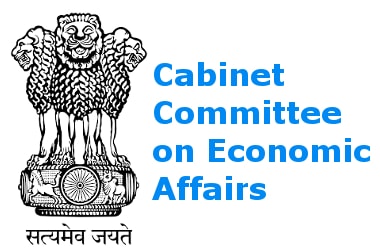
The Cabinet Committee on Economic Affairs, chaired by the Prime Minister Shri Narendra Modi has approved the proposal of Department of Rural Development.
This is for revision of cost of Socio Economic and Caste Census 2011 (SECC 2011).
It provides for:(a) Revising the cost of SECC 2011 to Rs. 4893.60 crore from the approved estimated expenditure of Rs.3,543.29 crore within the indicative cost of Rs.4,000 crore as approved by the Government.
(b) Approval of time and cost overrun and consequential revision in the upper limit of cost per record to the consortium of Central Public Sector Undertakings.
The SECC -2011 project has been concluded on 31.3.2016. The cost has already been committed and the project has met all its milestones.
Before the availability of SECC data, correct identification of eligible beneficiaries was a major challenge.
SECC database provides an authentic list of information disclosed by the households for identifying and prioritising beneficiaries under various schemes run by Ministry of Rural Development and other Departments in the Government.
How It Works- Ranking of Households is made through a three-step process involving thirteen Exclusion parameters for identifying not-poor households.
- Also selected are five Automatic Inclusion parameters for identifying poorest of the poor households and seven Deprivation Criteria for identifying poor households.
- Government of India has advised States to use this process, SECC data and its TIN number of households for identification of poor under Deendayal Antyodaya Yojana (DAY), Pradhan Mantri Awaas Yojana-Gramin(PMAY-G), etc.
- Use of SECC-2011 has brought transparency in selection of beneficiary and its structured incidence with DBT having maximal impact on governance and accountability
Need for SECC- Before the availability of SECC -21011 data, Below Poverty Line (BPL) list prepared in 2002, by States/UTs was being used for identifying beneficiaries of development programmes and schemes.
- This is including Pradhan Mantri Awaas Yojana-Gramin (PMAY-G)) and National Social Assistance Programme(NSAP).
- The 2002 BPL list attracted claims of biases.
- It was decided by the Government on 19th May to launch a Socio Economic and Caste Census 2011 in order to get data for ranking of households for receiving benefits from the Government.
- To avoid exclusion and inclusion errors, the SECC 2011 elicited information on identified parameters from each household for identification of deprivation and multi-dimensionality of poverty.
Importance of SECC- SECC allows ranking of households based on their socio economic status.
- SECC-2011 provides the government the names and number of families in each Panchayat and details their status on seven deprivation parameters.
- The advantage of SECC is that it provides for programme specific customized priority list to suit programme objective and budget space to address specific deprivation.
- Ministry of Rural Development has generated customized priority list for Pradhan Mantri Awaas Yojna-Gramin(PMAY-G) and Deen Dayal Antyodaya Yojana - National Rural Livelihoods Mission (DAY-NRLM) from SECC following due selection process approved by the Government.